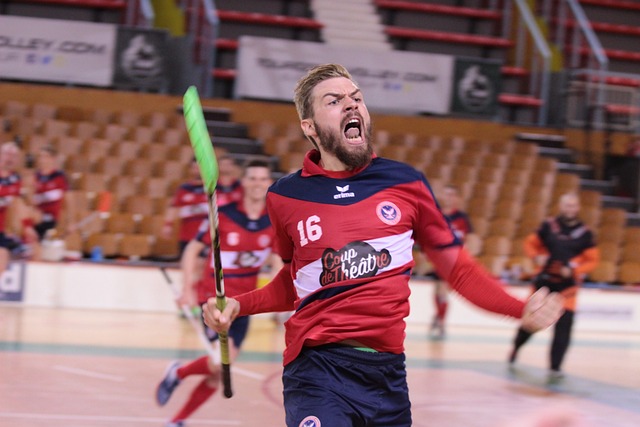A Brief History of Floorball
As a favor to sports fans, I thought I’d do a little research about the brief history of floorball, as best I could gather online. So, with that…
Floorball is a relatively new sport, having been invented in Sweden during the late 1970s. It quickly
spread to other countries across Europe and around the world, becoming an increasingly popular
sport.
Floorball is now played professionally in many countries, including Finland, Switzerland, Germany and Australia.

The history of floorball began in Gothenburg, Sweden where two men named Jan-Erik Andersson and Ulf Nilsson developed the idea for this fast-paced game while they were playing table hockey at home. The two men wanted to create a version of hockey that could be played indoors on any type of surface, such as wood or carpeted floors.
In 1979 they created their first set of floorball sticks, which had plastic blades attached to wooden shafts with rubber handles for grip. They also designed balls made from compressed air so that players could enjoy more control over their shots than if using traditional ice hockey pucks.
In 1981, Andersson and Nilsson formed Sala IBK (Indoor Bandy Klubb), which became one of the first organized teams devoted exclusively to playing floorball. This team was soon joined by others throughout Sweden, helping to promote the game even further by organizing tournaments between different clubs from various cities across Scandinavia and beyond its borders into Europe.
By 1982 there were already several professional clubs established in Sweden alone, with regular matches being held both indoors and outdoors depending on weather conditions.
By 1986, international recognition came when representatives from Switzerland participated in a tournament against Swedish teams helping to spread awareness about floorball abroad. Soon after this event, more European nations began forming national leagues, such as Finland’s SM-liiga (Finnish National League) established in 1987, followed shortly thereafter by Norway’s Norgesmesterskapet
(Norwegian Championship).

Soon after, Floorball started gaining popularity all over Europe, thanks mainly to internet media coverage — from the mid-1990’s until present day — making it easy for people outside the Scandinavian region to learn about the game’s rules and equipment. Live matches could even be viewed nearly anywhere, at anytime, via streaming services like YouTube.
Floorball has continued growing ever since, with World Championships taking place every 2 years starting in 1998. The International Olympic Committee began recognizing it as an official sports discipline in the 2020 Summer Olympics in Tokyo Japan, marking yet another milestone achievement towards global expansion & mainstream acceptance worldwide.
Today there are numerous organizations dedicated solely to promoting floorball globally, such as the IFF (International Floor Ball Federation). Founded in 1991 and based in Helsinki, Finland. it aims to provide a unified platform and governing body for matters related to competitions, regulations, rule enforcement, player safety, and more. Alongside IFF are several regional federations, like the AOFCA (Asia Oceania Floor Ball Confederation Association), which focuses specifically on Asian Pacific Rim events within respective regions, and providing help and support to local communities looking to grow, develop, or sustain participation levels.
Only recently has this sport taken off in North America, with the first floorball club being founded in 1992 in Toronto, Canada. This club sparked the foundation of other clubs in both Canada and the United States.
In 2007, the United States Floorball Association (USFbA) was founded and has since grown to include dozens of affiliated clubs and leagues across the US. That association also organizes the annual US Nationals, the largest floorball tournament in North America.

In 2017, the North American Floorball League (NAFL) was launched as the first professional floorball league in North America. It’s made up of six teams across the United States and is growing in popularity each year.
Overall, floorball is becoming increasingly popular in North America, with more people playing the sport, more organizations being formed, and more tournaments and leagues being created. Yes, it’s an exciting time for floorball in both Canada and the US, and the future looks bright.
As for the success of floorball, it might be attributed largely due its accessibility — meaning that nearly anyone can play, regardless of their environment or equipment budget, since all one needs is a rather inexpensive stick. along with an indoor space large enough for playing safely. Furthermore, its fast pace makes this sport action-packed, while easy enough to learn rather quickly.